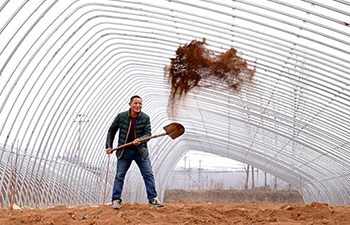CHICAGO, Feb. 14 (Xinhua) -- Using a novel live-imaging technique, University of Michigan (UM) researchers have directly detected short-lived leaks in epithelial tissues for the first time.
In the study, the researchers used epithelial cells in live frog embryos, which have cell-cell junctions similar in structure and protein composition to those in human epithelial tissues.
During embryonic development, many epithelial cells work together to bend and fold tissues. Using their new microscopy assay, known as ZnUMBA for Zinc-based Ultrasensitive Microscopic Barrier Assay, the researchers studied what happens at the cellular level when epithelial cell-cell junctions are stretched.
They showed that leaks in barrier function happened when cell-cell junctions elongate. But the leaks are short-lived, suggesting there is an active repair mechanism.
On further investigation, the researchers discovered that the repair mechanism involves local activation of the protein Rho, in a sudden burst of activity they dubbed a Rho flare. Rho then activates proteins that contract the junction, repairing it.
"We discovered that cells are normally very proactive when it comes to maintaining the barrier," said Rachel Stephenson, a doctoral researcher in the UM Department of Molecular, Cellular and Developmental Biology. "This repair mechanism happens quickly and is carried out very locally, affecting only a small part of the cell junction, rather than multiple cells or the whole tissue.
"We think that this proactive approach is what gives our cells the flexibility to move and change shape without compromising the barrier function of the tissue. Diseases involving a leaky barrier might be due to a faulty repair mechanism or the cells' inability to detect leaks and flip the switch."
The researchers are now working to determine how the switch gets flipped to turn on Rho at the right time and place and to identify other proteins that are part of the cellular repair crew to plug leaky biological barriers.
The findings are published online in the journal Developmental Cell Thursday.













